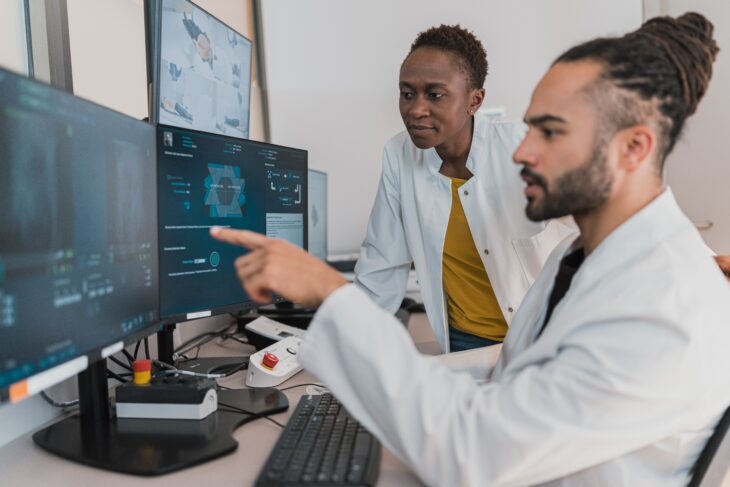Abnormal lumps that form in the lungs can cause lung cancer. Doctors can detect these lumps, called nodules, using a type of X-ray called computed tomography, or CT for short. To assess whether images of lung nodules captured on CT scans indicate lung cancer, doctors use two models based on probability, called the Brock model and the Herder model. These models are like calculators – doctors input patient information like age, sex, and smoking history, and nodule characteristics like size and location. From this data, the models calculate a score representing the probability of whether or not the patient’s nodule is cancerous.
The American College of Radiology issues the medical guidelines doctors use to screen for lung cancer based on a patient’s CT images. According to their guidelines, patients with lung nodules greater than 15 mm (about half an inch) in size are at high risk of death from lung cancer. Scientists in the past developed an artificial intelligence (AI) model based on a type of machine learning called a neural network to investigate lung nodules up to 15 mm in size for the early diagnosis of this disease. However, no scientists have used AI to investigate lung nodules larger than 15 mm in size.
Several researchers from the UK recently teamed up to develop an AI tool that can analyze nodules larger than 15 mm for early diagnosis of lung cancer. They included 499 lung cancer patients aged 18 and above who had lung nodules this size. To develop the AI tool, they extracted features from the patients’ CT scans, like nodule size, number of nodules, and whether the tumor had spread throughout the body, referred to as malignant, or had stayed put, referred to as benign.
First, the scientists asked three doctors who specialize in analyzing medical images, called radiologists, to look at 252 CT scans from these patients. The doctors rated the scans on a 5-point scale, with 1 as benign, 2 as probably benign, 3 as undetermined, 4 as probably malignant, and 5 as malignant. Next, the scientists extracted the size and number of nodules from the CT scan images using their own AI software. This method of extracting features from medical images using AI is called radiomics.
Using a statistical method called univariate logistic regression, the team determined how the number of nodules, patient age, sex and smoking history were related to each other. These relationships allowed the researchers to predict which data will be most useful in identifying patients at high risk of lung cancer. Then, they used the nodule features extracted from the CT scans, like size, number of nodules and whether they were malignant or benign, to develop a new AI model to determine which patients were at high risk. They called their new model the large-nodule radiomics predictive vector (LN-RPV) model.
To compare how well their LN-RPV model performed against the three radiologists, the scientists checked a metric called the Area Under the Curve (AUC) values of the model versus the doctors. The AUC values are used to measure how accurately the model or doctor separates things into two different categories. For example, if the AUC value is 90%, it means the model or doctor can correctly distinguish nodules that are 15 mm and smaller from nodules that are greater than 15 mm. But if the AUC value is 30%, it means the model or doctor cannot distinguish between the small and large nodules correctly. The researchers found the AUC values of the three radiologists were 74% to 77%, while the AUC value of the LN-RPV model was 83%.
Next, they compared the AUC of the LN-RPV model with the AUC of both the Brock model and the Herder model scores of the patients based on the CT scans alone. They reported the AUC of LN-RPV was 87% compared to the AUC of the Brock and Herder models, which were 67% and 83%, respectively.
Finally, they checked whether the LN-RPV model can identify nodules missed by the radiologists in patients whose Herder scores were between 10-70%. Using the LN-RPV model, they found 18 such malignant nodules. They suggested this data meant the AI model would have been useful in early diagnosis of 82% of malignant nodules with Herder scores of 10-70%.
The scientists concluded their AI model more accurately diagnosed risk of lung cancer in large lung nodules compared to the radiologists or the previous models. They suggested their model could be integrated into medical guidelines and used by doctors to identify patients who are at high risk of developing lung cancer, which could facilitate early detection and treatment. However, they also recommended the model first be tested against a larger patient database to check its performance before it is widely used in hospitals or clinics.


